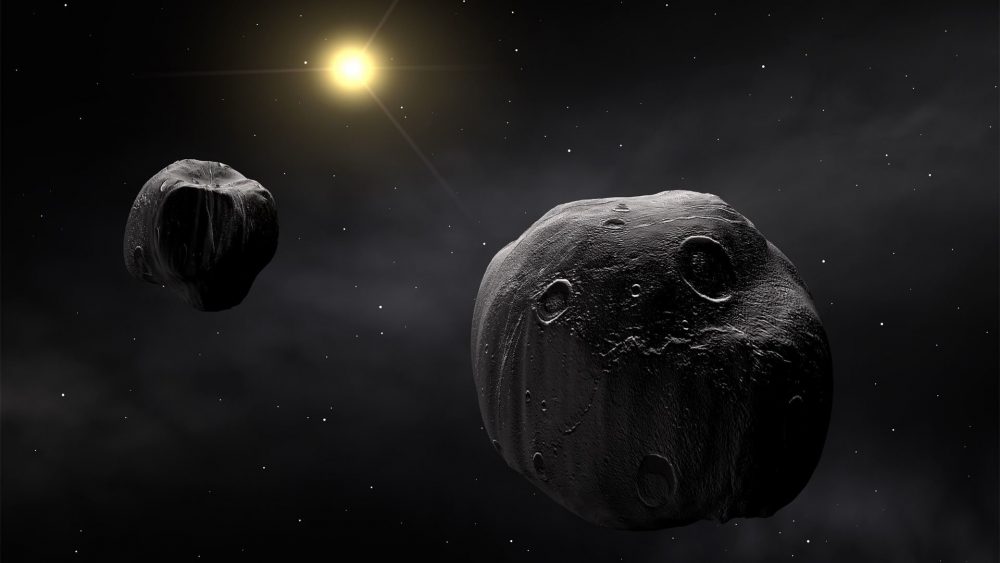The last time the trans-Neptunian object came this close was more than 600,000 years ago.
Astronomers have discovered a new trans-Neptunian object that may be the largest Oort Cloud object ever discovered. The diameter of 2014 UN271 is believed to be between 130-370 kilometers, and its closest approach to the Sun will take place in early 2031 when the object will fly between the orbits of Uranus and Saturn. The announcement of the discovery was published on the website of the Minor Planet Center.

Everything you need to know about the largest Oort Cloud object ever discovered
1. 2014 UN271 was discovered by astronomers Pedro Bernardinelli and Gary Bernstein during a reanalysis of the DES (Dark Energy Survey) archive of sky images from 2014 to 2018.
2. At the time of its initial discovery in 2014, the object was about 29 astronomical units from Earth. Scientists note that searching for trans-Neptunian objects in DES data is very time-consuming, so the discovery was reported only on June 19, 2021.
3. Today the object is located at a distance of 20.2 astronomical units from the Earth. Its orbit is strongly (95.4 degrees) inclined relative to the ecliptic plane and elongated (eccentricity 0.99), and so that the previous barycentric aphelion, according to calculations, is at a distance of 39,400 astronomical units from the Sun.
NEWSLETTER
Never miss a news release from the Curiosmos team.

The current position and orbit of the minor planet and possibly the largest Oort Cloud object to date – 2014 UN271, which will make its closest pass to the Sun in 2031. Credit: JPL Small-Body Database
4. The new value, after approaching the Sun, will be 54,600 astronomical units, which means the entry of 2014 UN271 into the inner part of the Oort cloud.
5. The absolute stellar magnitude of 2014 UN271 is 7.87, which, when combined with an approximate albedo estimate of 0.01-0.08, gives the object’s diameter in the 130-370 kilometers range.
6. Thus, 2014 UN271 may be a fairly large trans-Neptunian object, comparable in size to the nucleus of comet C / 1729 P1, or even be a dwarf planet.
7. Despite the fact that no coma was observed in the object between 2014 and 2018, astronomers believe that as it approaches the Sun, 2014 UN271 may begin to exhibit comet-like activity.

The largest Oort Cloud object captured by astronomers. Yes, the image is not as impressive but 2014 UN271 is still too far away to be observed adequately. Credit: Pedro Bernardinelli / DES Survey
8. The perihelion point is approximately 10.5 astronomical units from the Sun and 2014 UN271 will pass it in early 2031. Astronomers have estimated the orbit time of the minor planet around the Sun to about 600,000 years.
9. How fortunate that we will witness the closest pass of the largest Oort Cloud object in our lifetimes. Well, amateur astronomers will likely not get a chance to observe it with regular telescopes. Experts do not expect the object to be very bright. At the same time, the researchers expect that they will be able to observe it using the future Large Synoptic Survey Telescope.
10. As for the DES survey, in the next three months astronomers promise to publish a new complete catalog of trans-Neptunian objects discovered in the first four years of observations, which includes 2014 UN271.
Sources:
• The International Astronomical Union Minor Planet Center. (n.d.). MPEC 2021-M53 : 2014 UN271.
• Irving, M. (2021, June 21). Extremely eccentric minor planet to visit inner solar system this decade. New Atlas.
• NASA. (n.d.). JPL Small-Body Database Browser.
• O’Callaghan, J. (2021, June 21). An enormous ‘mega comet’ is flying into our solar system. New Scientist.
• Robitzski, D. (2021, June 21). A Tiny Planet Will Soon Drift Nearer to Earth Than Since Caveman Times. Futurism.